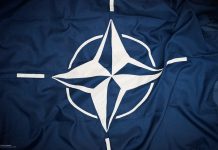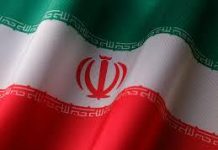
During its ‘Clemenceau 25’ deployment across the Indo-Pacific, the French Carrier Strike Group (CSG) assessed several regional ports for their ability to support operations of its nuclear-powered aircraft carrier. Among these, Subic Bay in the Philippines emerged as the most promising hub for logistical and operational support.
The mission provided France with an opportunity to expand its network of strategic partnerships and explore new logistical bases for its naval presence in the Indo-Pacific. Given France’s territories scattered across the region, maintaining reliable support points for its ships is a priority. With the aircraft carrier deployed, the CSG evaluated multiple ports to determine their suitability for hosting either the carrier itself or the new Jacques Chevallier-class replenishment ship (BRF). Notably, the BRF is considerably larger than standard surface combatants, measuring 193 meters in length with a full-load displacement of 31,000 tonnes.
The carrier or BRF visited four ports during the mission: Okinawa, Darwin, Lombok, and Subic Bay. In Okinawa, only the BRF and a FREMM frigate were allowed to dock due to Japan’s policy of barring nuclear-powered vessels over concerns related to nuclear weapons. A French naval commander, speaking at a private event on France’s Indo-Pacific strategy, emphasized that Okinawa is nonetheless well-suited for the BRF, especially given the presence of American and Japanese naval forces there.
The BRF also stopped in Darwin, northern Australia, which, while strategically important, posed navigational challenges. “Darwin is not an easy harbor for large vessels due to tricky access conditions. It’s doable, but not ideal,” an officer noted.
A highlight of the Clemenceau 25 mission was the aircraft carrier’s first-ever port call at Lombok, Indonesia—a diplomatic breakthrough, as no American carrier has visited the island since World War II. Lombok’s position, between the Java Sea and Australia, offers strategic access to both the Indian Ocean and Southeast Asia. However, the port lacks the necessary infrastructure and industrial capacity to adequately support a carrier. “Lombok is a beautiful island, but it doesn’t have the facilities needed for an aircraft carrier,” an admiral commented.
Further east, the Charles de Gaulle docked at Subic Bay in the Philippines. The Admiral praised the bay’s strategic location, describing it as “an ideal site” for carrier operations. Subic Bay, once home to one of the largest U.S. overseas bases during the Cold War, is comparable in size to Singapore’s naval facilities. After the withdrawal of U.S. forces in 1992—following Manila’s decision to remove all foreign bases—the area was repurposed by local companies and the Philippine Navy under the Subic Bay Metropolitan Authority. In recent years, however, growing tensions with Beijing over the South China Sea and Luzon Strait have revived military interest in Subic as a logistical and operational hub for foreign navies.
“The conditions are perfect for hosting an aircraft carrier. The depth is sufficient, and the necessary infrastructure and industrial support are in place,” said the Admiral. Subic is home to several shipyards, including the Subic Bay Drydock Corporation, which holds a Master Ship Repair Agreement with the U.S. Navy—signifying its ability to maintain and repair American warships to the required standards.
The Admiral’s remarks come amid deepening defense cooperation between France and the Philippines, which ranks among the strongest ties Manila has with any European nation. In 2023, both countries laid out a roadmap for defense collaboration. Since then, France has sent warships, aircraft, and personnel to participate in joint and multilateral naval exercises in Philippine waters. Paris has also proposed the sale of submarines, radar systems, and coast guard vessels to bolster Manila’s ongoing military modernization program.
Before arriving in Subic Bay, the French CSG conducted France’s first joint patrol with Philippine forces in the contested South China Sea. “We are here to ensure that these waters remain free and open for navigation. It is about exercising our rights in common international waters to ensure they remain accessible to all,” explained RADM Jacques Mallard, commander of the French carrier strike group, during a media briefing in the Philippines.




